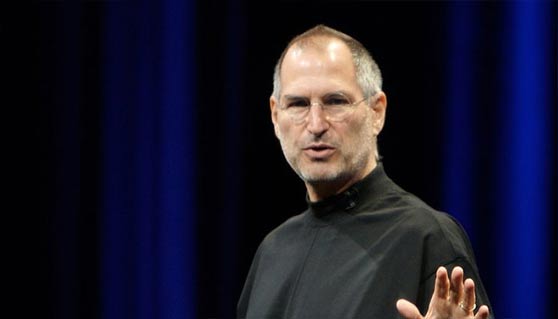by
_____
It’s a bit hard to get a fix on the Steve Jobs we see in the recent documentary “Steve Jobs: The Man in the Machine.”
On the one hand he’s an idealistic, charismatic visionary who singlehandedly creates the personal computer industry. On the other he’s “ruthless, deceitful and cruel,” says director Alex Gibney in his voiceover – steamrolling over the people around him in relentless pursuit of perfection.
Reconciling the two is daunting given that Jobs become a hero to so many would-be entrepreneurs, innovators and dreamers.
In the film, we see him striding onto the stage at an iPhone product launch, a master showman captivating his audience with his messianic fervor and charisma.
To professional communicators, he’s also a hero because he revolutionized the world of public speaking, particularly when it comes to business presentations.
So what exactly made Jobs so successful on stage? What can we learn from him?

Jobs’s stage appearances began with the launch of the original Macintosh in 1984. At first his delivery wasn’t highly polished – in fact you can see just how rough he was by checking out some of the Apple bloopers on YouTube.
Over time he gained more mastery, and as Carmine says, he transformed the “typical dull, technical, plodding slide show” into a “theatrical event.”
His “Stevenote” speeches at the Macworld Expos and the World Wide Developers Conferences, where Mac product releases were shown to the public, were more more like performances than presentations – tightly and precisely choreographed events.
According to Gallo, when he was on stage Jobs adhered to a few simple rules we all can learn from:
- Develop a great script
- Show a messianic sense of purpose
- Include villains and heroes
- Stage your presentation with props and stunning visuals
- Have a breakthrough emotional moment at the end
- Make it look effortless
Much as been made of the influence of Zen aesthetics on Jobs’s design sensibility and the look and feel of Apple products. He was equally passionate, to the point of obsessive, about applying the spare and minimalist look to his slides.
They were tightly controlled, with few words and lots of full-bleed photographs. “Every slide was written like a piece of poetry,” NeXT executive Paul Vais is quoted as saying in The Second Coming of Steve Jobs.
The whole thing required an extraordinary amount of prep and rehearsal. As a BusinessWeek reporter noted, Jobs’s informality was the result of “many grueling hours of practice.” By all accounts that meant not just days, more like many weeks.
As he gained more power, Jobs became even more controlling about his presentations, his public image, and the myth he created for himself and Apple.
“He was always constructing a persona for himself, says Gibney, and it became “difficult to see him as anything more than the character he wanted you to see.”
Jobs, he says, “stage managed a role he felt he was born to play.”
© Copyright 2015
________________________________
Want to talk? Reach me at dana@danarubin.com

